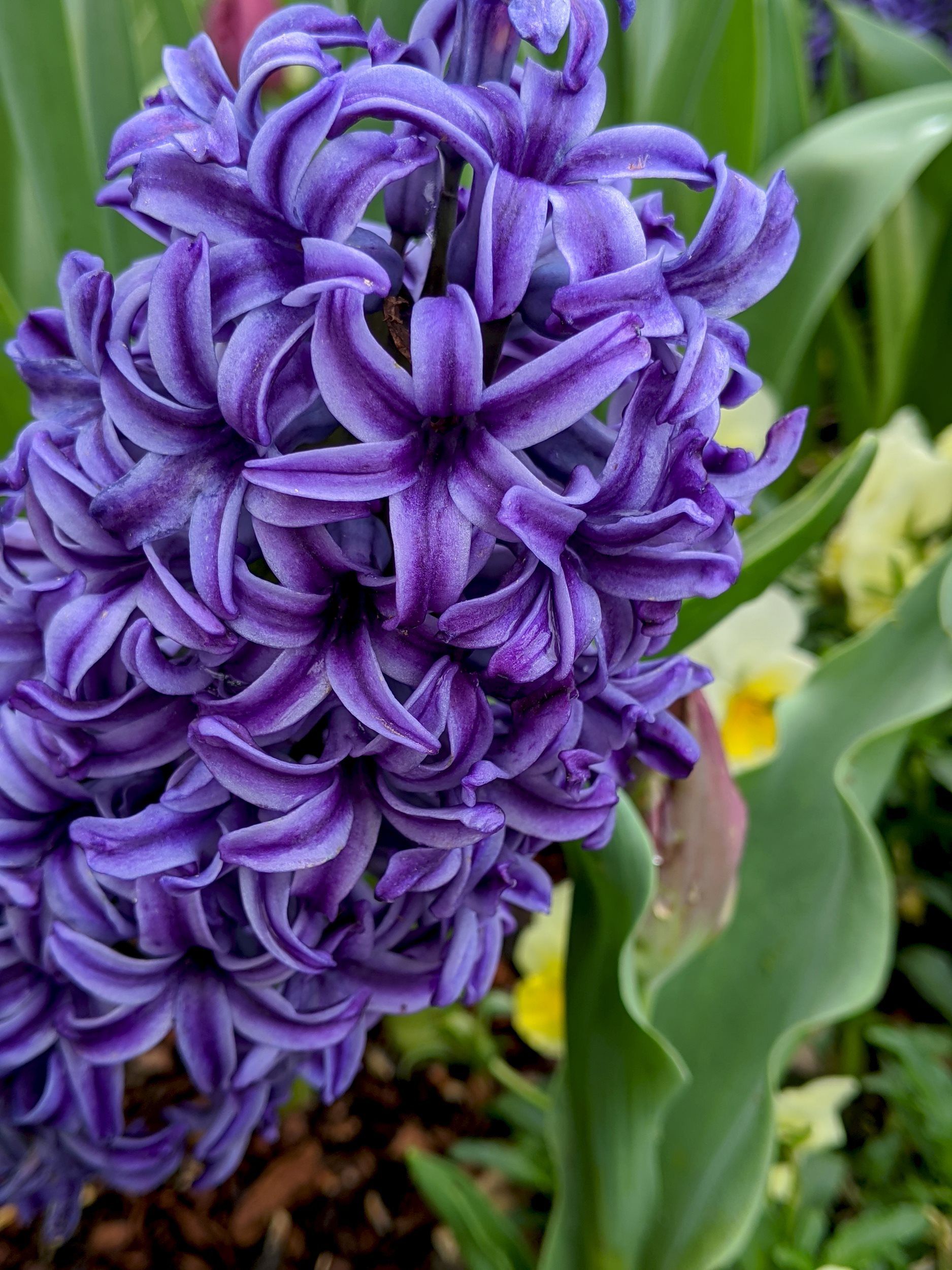Cultural Information
Plan Your Spring Garden in the Fall
Tulips, Hyacinths and Daffodils
Flowering Season
Mid-March to Mid-May, depending on local weather conditions.
Height Range
6 inches to 3 feet
Colors and Shape
Wide selection of colors and shapes.
Purchase Your Bulbs in the Fall!
Purchase bulbs that are firm. Buy early to get the best selection.
The size of the flower is directly related to the size of the bulb.
Small nicks and loose skins (tunic) do not affect the development of the bulb. Loose tunics enable you to inspect for diseases.
Keep cool (less than 65°) before planting and provide adequate ventilation to avoid moisture build up.
Suggested Planting Schedule
Zones 2 and 3 : September
Zones 4 and 5 : September – early October
Zones 6 and 7 : October – early November
Zone 8 : November – early December
Zone 9 : early December
Bulbs may be planted later in the fall than indicated above if planted before frost sets in.
Spring For Bulb Naturalization
Fertilize the plants as soon as they emerge (February to March).
Remove flower organs with scissors after the flower petals fall off.
Allow the foliage to die naturally!
When desired, over plant areas with summer annuals.
Diseases
Start with healthy bulbs to avoid diseases. Botrytis (Fire) is a major garden disease and is controlled by fungicides, e.g. Benlate, Captan, Dithane, etc.
If the soil becomes diseased, use Terraclor (PCNB) in the bed before planting bulbs in the fall. Follow label directions.
Insects
Insects are generally not a problem.
Should aphids appear, they can be controlled with Malathion. Follow label directions.
Special Note to Landscapers
(Use of Pre-Emergent Herbicides)
Use extreme caution when applying pre-emergent herbicides in close proximity to bulb beds. Products such as Ronstar or OHI, Goal and Prowl (Oxfluorfan and Pendamethalin) may cause flower abortion when used on or near Tulip beds.
If you must use pre-emergent herbicides, we suggest Betasan, Chloramben, Dacthal, Devrinol, Enide, Eptam or Treflan. Keep in mind that many of these products can prove harmful to your bulb beds and should be used with extreme caution. Post-emergent herbicides such as Fusilade or Poast seem to cause less problems and should be considered.
Please Note: Mention of pesticides, growth regulators etc. are by way of illustration only not an endorsement. The label is the law, therefore growers must follow label directions with all regulated materials. Furthermore, different cultivars respond differently to treatments therefore try a small percentage of your crop before applying a treatment to the entire crop. Mention of one product does not preclude the use or benefit of other similar products. Remember read the label and follow it.
Miscellaneous Bulbs
Allium, Anemones, Crocus, Galanthus, Iris, Ranunculus, Scillas, etc...
Flowering Season
Mid-February to early July, depending on local weather conditions.
Height Range
3 inches to 4 feet
Colors and Shape
Wide selection of colors when all species are used.
Fall Bulb Planting Techniques
It is essential to plant bulbs in a well drained area. The pH should be 6.0 to 7.0. Bulbs may be used in beds (annuals or perennials), borders, ground covers, rock gardens and wooded areas. For naturalization, it is best to avoid planting them in full sun areas.
Spring and early summer flowering bulbs must be planted in the fall in order to develop a root system and to satisfy the cold requirement for bulbs. It is best to wait until the soil temperatures are below 60°F before planting.
Planting Instructions
Excavate the area to be planted. The depths below are measured from the base of the bulbs to the soil level. Plant small size bulbs 3 inches deep. Plant large size bulbs 5 inches deep. Plant 2 inches deeper in northern climates.
Plant bulbs at the suggested depth to help protect against frost, animals and physical damage due to hoeing.
Place bulbs in the bed and space according to size. For eye-catching splashes of color in the bulb garden, be sure to plant the bulbs in cluster rather than in single rows. Large bulbs should be 4” - 6” apart and small bulbs 1” - 2” apart. If desired, interplant.
Bulbs may be layered, i.e. plant Darwin Hybrid tulips 5 inches deep and crocus directly on top, but only 3 inches deep. The crocus will bloom early in the spring and will be followed by more color later when the Darwin Hybrids bloom. This piece of ground will be in flower for a longer period of time.
Cover bulbs with soil using only one-half of the soil removed. Water thoroughly. Finish covering bulbs with remaining soil. Fertilize with 9-9-6 Bulb Booster fertilizer at a rate of 4 lbs/100 sq. ft. (1/3-1/2 sq. ft.). Cover the bed with 2” to 3” of mulch.
If the fall is dry, water area as needed, which also provides additional cooling.
Potscaping or Container Gardening
The Moveable Bulb Landscape
Large containers (redwood tubs, long boxes, whiskey barrels, etc.) have several advantages.
Versatility
Flowering containers may be used both indoors and outdoors. They are great for decorating pretty much any room and are great for pops of color at events.
They are also great to decorate terraces, patios, porches, paved or graveled areas, courtyards, balconies, outdoor staircase landings, the gate or front door. The possibilities are endless.
Mobility
Flowering containers may be moved at will and whenever and wherever they are wanted or needed.
Flowering containers may be removed or the plant may be replaced when the foliage starts dying.
Weeds rarely pose a problem.
